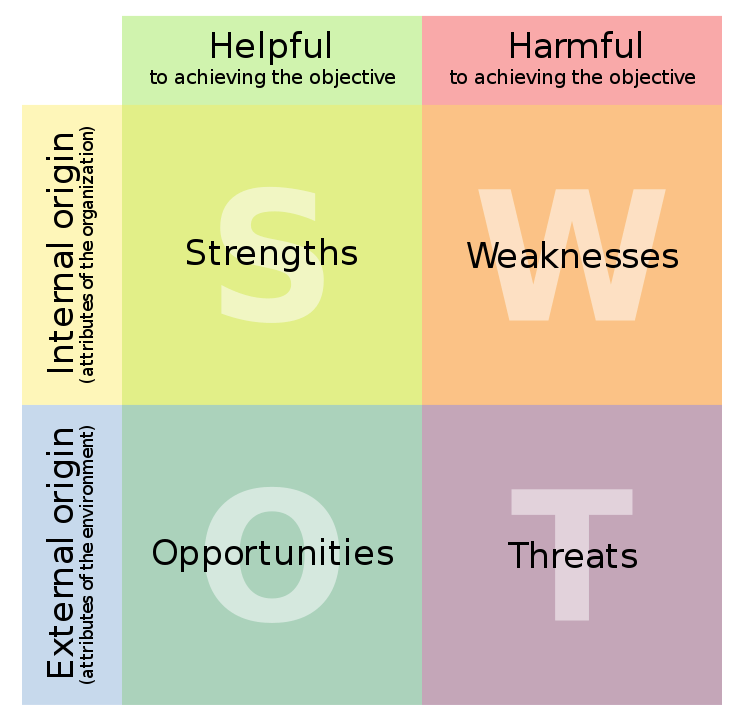- Overview
- 1. Current Situation and Export Objective
- 2. Internal (Company) Analysis
- 3. External Analysis/ Market Research
- 4. SWOT Analysis
- 5. Export Go (No Go)
- 6. Market Entry Strategy
- 7. Action Plan
- 8. Financial Plan
Overview
A well-structured and focused export plan has many benefits for your business. It helps you:- Assess the market potential of your product or service
- Prioritize your target markets
- Develop strategies to optimize your strengths and tap opportunities
- Identify risks and prepares you to manage them efficiently
- Ensure sustainability of the business by matching available resources to plans
In 8 steps, we explain the most important components of a solid export plan.
1. Current Situation and Export Objective
The purpose of this first step is to lay out the foundation for your export plan by briefly explaining the current situation and ambition of your business. This section should include, but should not be limited to, the following elements:- Your value proposition in export markets, your target customers, and your buyers.
- Your objectives behind exporting (e.g. diversifying your revenues, improving your profit margins, enhancing your brand image, etc.).
- Your export targets (countries you want to enter, products you want to export, etc.).
2. Internal (Company) Analysis
This step of your plan aims at providing detailed information of your company’s overall financial performance over the last 3 years at least, as well as your company’s mission statement and objectives. In addition, it is essential to explain your current sales performance in the domestic and export markets as well as the overall market approach. After this evaluation, the company’s weaknesses and strengths are identified for the following 5 M’s:- Manpower
- Material
- Machinery
- Money
- Methods and Management.
3. External Analysis/ Market Research
After identifying the product(s) that you would like to export and the potential target market(s), you will conduct an external analysis to understand the 4Cs in each market:- Customers
- Competitors
- Channels
- Context
For each one of these criteria, you will identify the opportunities and threats for your business. For example, with regards to the customers in your target market, you need to ask the following questions:
- What do the customers in my target market request?
- What are their needs regarding my product?
- What are their consumer habits?
- What are the new trends specific for my product?
By answering each of these questions you will be able to identify your opportunities and threats in this market.
4. SWOT Analysis
The aim of this step is to summarize the above two analyses in order to understand whether there is a real export opportunity for the selected product(s) and market combinations.The Strengths and Weaknesses are derived from the company’s internal analysis while the Opportunities and Threats are derived from the company’s external analysis.
The SWOT analysis will be the building block for your export strategy as it helps you identify the most relevant target markets for your product.

5. Export Go (No Go)
You will need to develop another export plan with a new product/market combination if the SWOT analysis shows at least one of the below conditions:- your company is not ready to export
- the pre-selected market is not well fit with your company’s offer
However, if the SWOT analysis shows an export opportunity, then you can continue with the below steps.
6. Market Entry Strategy
In the market entry strategy, you will translate the outcomes of the SWOT analysis into a clear strategy. At this stage, you should ask yourself:- What will our strategy for our selected product/market combination be?
- What entry mode are we going to use?
- What trade partners will we start working with?
- What will our positioning be when entering the market?
- What are our objectives on export sales, profit, and clients in both the short (1 year) and medium term (3 years)?
- What will our marketing mix look like?
You can refer to our Export Plan Template which will provide more guidance on how to complete this section
7. Action Plan
At this stage, it is time to translate the strategy into actionable elements that include a specific timing and budget for each step.For each identified export objective, describe the activities and action steps that need to be undertaken to reach that target. Make sure that all of the combined activities will achieve the overall objective. In the action plan you should also provide details on:
- Timeline needed to execute these steps
- Resources
- Budget, and
- Responsible personnel
8. Financial Plan
Finally, after you have identified the activities and action steps needed to execute your plan, it is time to develop your forecasted Income Statement and Cash Flow Statement to ensure a realistic and healthy financial export business.These statements will be very helpful when applying for loans or raising capital. Investors will mainly be looking at your financial plan to determine the feasibility of your export strategy.

Tips
- Start developing your export plan by making use of our Export Plan Template.
- Keep in mind that there is no one-size-fits-all export strategy. Your export plan should be an extension of your company’s overall business plan. If you don’t have a business plan in place yet, the Investment Development Authority of Lebanon (IDAL) can guide you on how to write the appropriate business plan for your company.
- Make sure your local and international marketing activities are aligned.
- Build your export strategy based on quantifiable objectives.
- Develop optimistic and pessimistic scenarios to test your company’s resilience to different changes.
- Seek support from others to review your strategy. Our Trade Support sectionwill give you an overview of the entities that can provide you with support.
- Keep it brief and simple, but make sure it is up to date.
